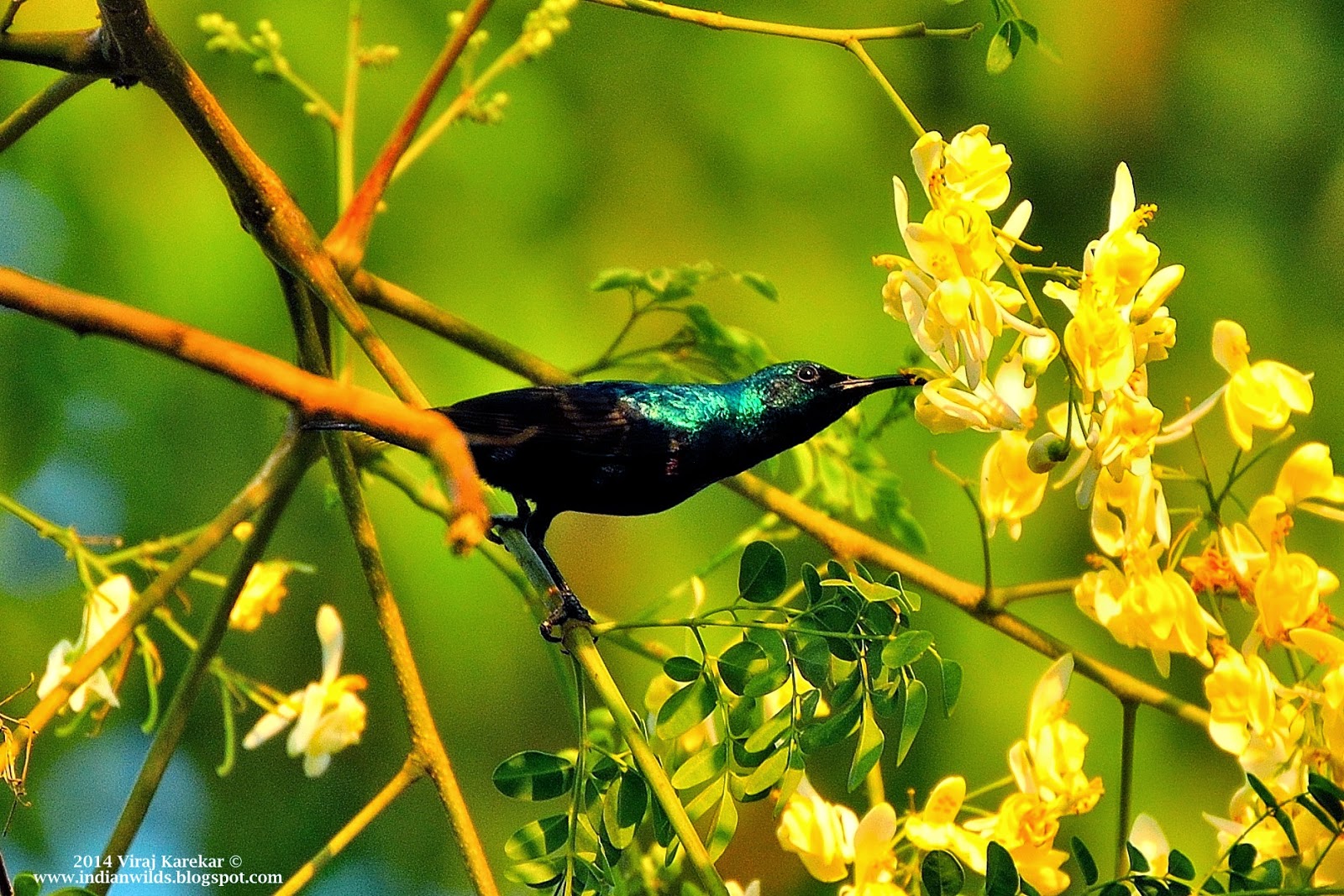Here are some photographs of the most beautiful tiny Sunbirds which i took. When i clicked the picture of a Sunbird for the first time, i showed it to my mom saying "look mom... i captured a humming bird......!!" But later came to know that these were Sunbirds, but not Hummingbirds... With the help of my wildlife photographer friends, i came to know more about these Sunbirds. These were found to be very hyper active and unstable or stationary at a place. It was very difficult to capture these photographs without a tripod stand. They used to just disappear in a fraction of seconds.. So here i am sharing some information along with the photographs of these Sunbirds which i took. Hopefully you will enjoy reading through.....!!
 |
| The male purple sunbird has two distinct types of plumage. The breeding male is characterized by the metallic bluish-black body, and the tuft of crimson and yellow feathers under each wing. |
 |
| There is a patch of bright blue on the shoulder of breeding males. The maroon shine on the feathers of the collar around the neck is visible mainly during the breeding seasons. |
 |
| A closer look at the eclipse (non-breeding) male |





























